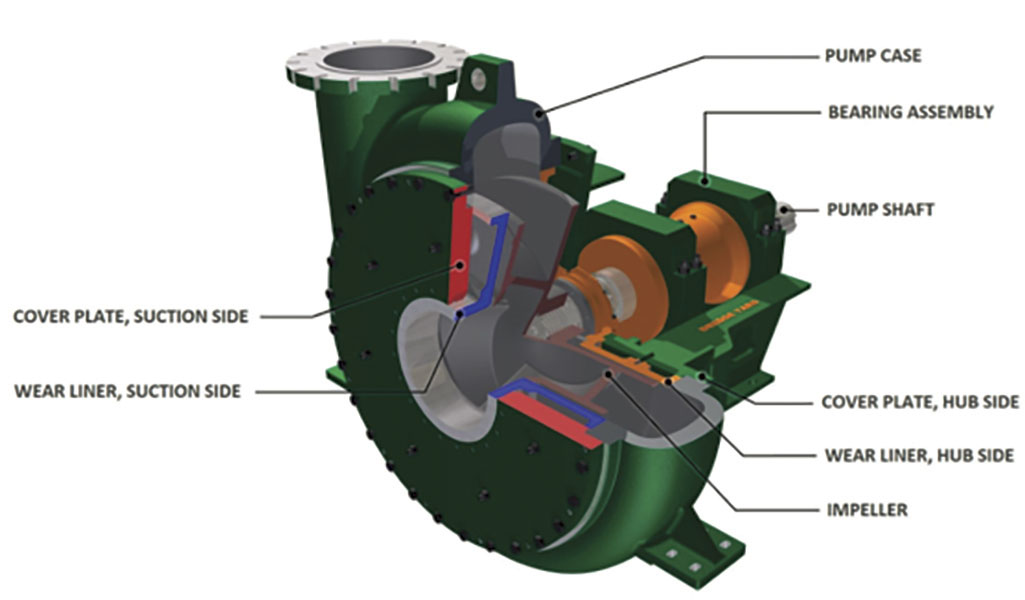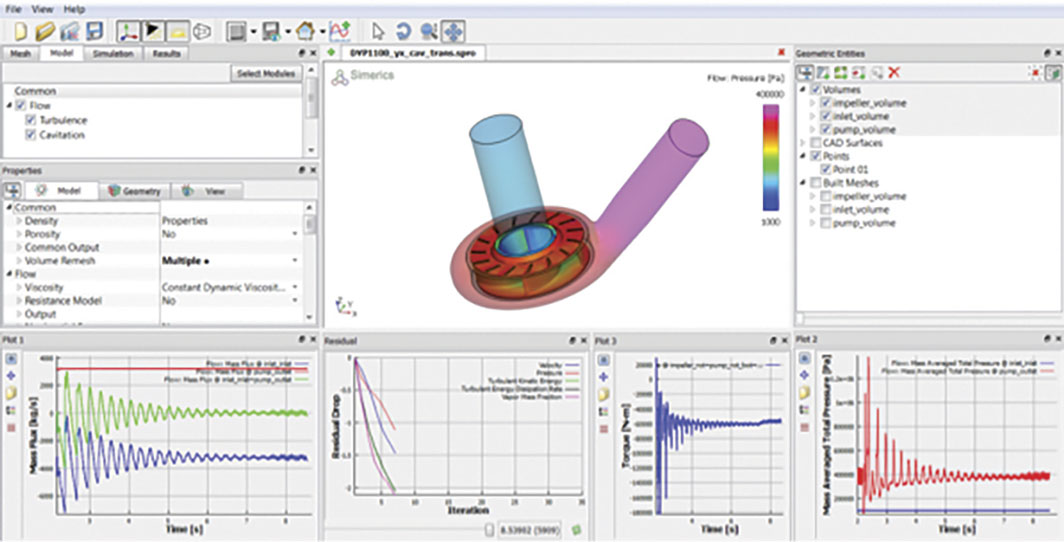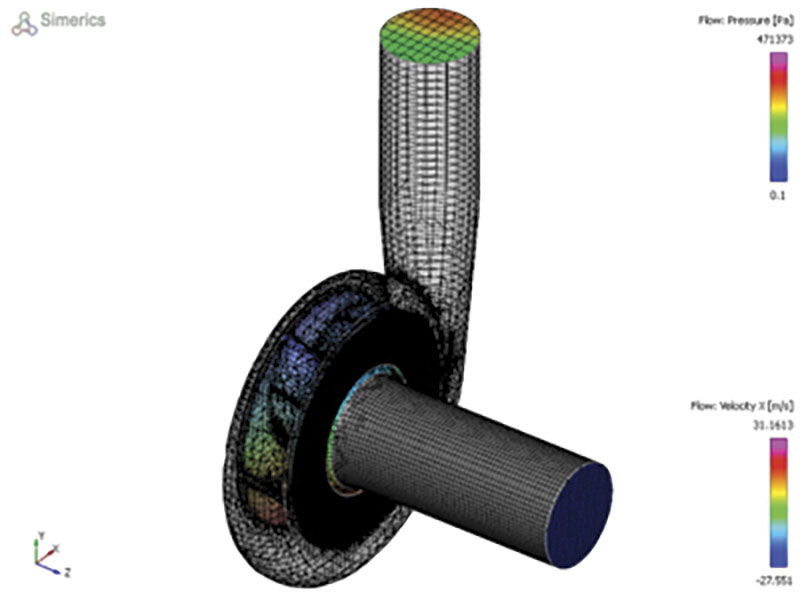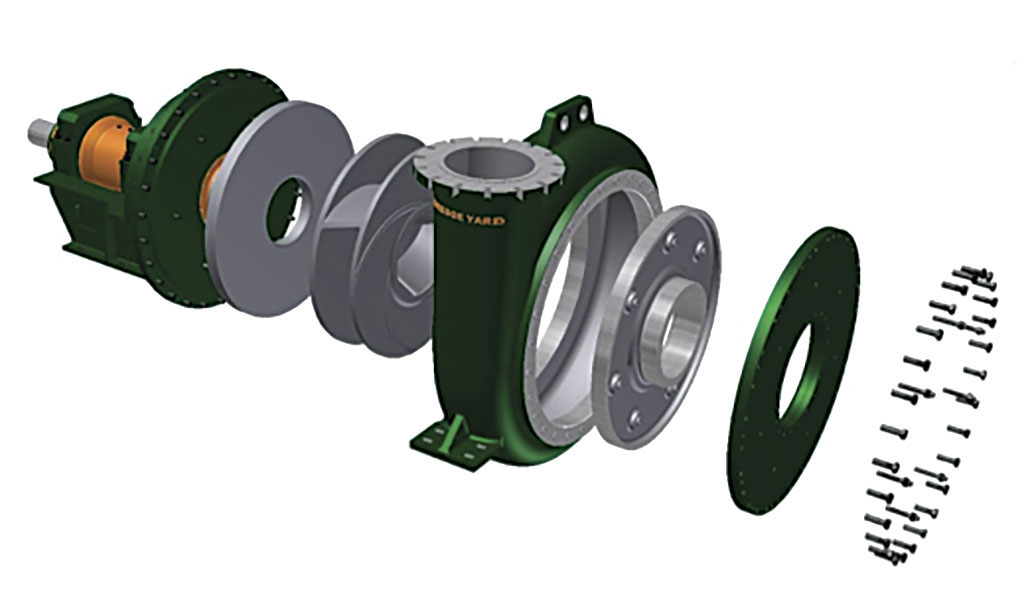At its location in the UAE, Dredge Yard engineers develops and supplies dredging and mining equipment such as dredge pumps, ball joints, cutter heads and complete dredgers. The dredge pump is a dredger's main component and is critical to achieving production. Dredge pumps also consume the most power during operation, so efforts to reduce the pump's power needs through smarter design are critical.
Dredge pumps involve more complex engineering challenges than water pumps. They must carry water filled with a diverse, dense mixture of solids, including mud, fine sand, coarse sand, gravel, stones and other debris. The pumped water does not behave like a homogenous fluid because of the different viscosities. The soil tends to settle down and slide on the pipe bed, depending on the flow speed.
Another challenge is that pump parts wear quickly. Clogged impellers and breaking vanes also pose risks to pump performance. Equipment replacement can eat away at operational efficiency and increase the dredger's overall lifetime costs.
 Figure 1. Large dredge pumps (above) often rely CFD software (below) for an efficient hydraulic design. (Graphics courtesy of Dredge Yard and Simerics)
Figure 1. Large dredge pumps (above) often rely CFD software (below) for an efficient hydraulic design. (Graphics courtesy of Dredge Yard and Simerics)
Designing the Industry's Largest Pumps
In 2012, Dredge Yard began developing new dredge pumps ranging from 200 to 1,400 millimeters (mm)— the largest size in the dredging industry. These pumps are designed to counter wear problems inherent to dredge pumps. Impellers are designed in multiple categories of three, four and five vanes. To resist wear, the pump parts are made from high-chromium iron with a hardness of 60 HRC. These materials unfortunately have high elongation properties and do not resist impact. For this reason, some dredge pumps are built with an outer casing—called the double-walled pumps.
The large pumps are connected in series, reaching a final pressure of 30 bar by the third pump. The pumps often weigh more than 100 tons for one complete assembly, including wet parts, outer casing, plates, shaft, bearing assembly and pedestal. Size, weight and component resistance, among other factors, create an imposing challenge for dredge pump designers.
 Figure 2. CFD programs simulate flow through dredge and other wastewater pumps in order to produce a 3-D model.
Figure 2. CFD programs simulate flow through dredge and other wastewater pumps in order to produce a 3-D model. Figure 3. The 3-D models take into account such performance measurements as flow rate, head and cavitation for many of the pump's components.
Figure 3. The 3-D models take into account such performance measurements as flow rate, head and cavitation for many of the pump's components.Demand has recently grown in the market for even bigger dredgers. Dredge pump size must increase from 1,400 to 1,600 mm—even 1,800 mm. Larger suction pipes and dredge pumps must be designed to fill the dredgers in less than two hours.
New design methods are needed to efficiently adapt to the new market demand. Pumps must be tested and analyzed for efficiency and performance. Foundries with casting capacity of 50 tons and heavy-steel machinery 6 meters in diameter are required when casting and machining the pump cases.
Steady-State or Transient Simulation
The size of these dredge pumps makes building a laboratory for testing and analysis extremely difficult—if not impossible. The manufacturer must design and manufacture the pump as a prototype and deliver the prototype to the dredger without testing and performance checks. All performance will be tested in the dredger when it starts working. The design must be flawless before production.
Engineers at Dredge Yard test dredge pump performance with computational fluid dynamics (CFD) instead of physical testing. CFD software calculates and simulates pump performance measurements such as flow rate, aeration, cavitation, head, efficiency, power required and net positive suction head (NPSH).
CFD codes can provide steady-state simulation, also known as multi-frame reference (MRF) or "frozen blade" simulation. The impeller is placed in a reference frame that rotates at the pump speed while solving for the rest of the pump in the stationary lab frame. The MRF approximation can quickly estimate pump performance. However, transient effects such as cavitation, aeration, pressure ripples or other pulsation can invalidate the results if significant.
Transient simulation provides more accuracy when measuring all fluid passages, including small gaps and clearances. However, these simulations take longer than steady-state simulations. Dredge Yard used CFD software to test three pump models: Dredge 500, 900 and 1100. The mesh size for each of the Dredge 500, 900 and 1100 pumps is about 0.7 million grid cells. Each transient simulation took four hours to complete.
The transient predictions were within 10 percent of the test results for all three cases and within 4.5 and 3.3 percent respectively for the larger pumps. This level of accuracy, especially for the larger pumps, highlights the benefits of CFD virtual testing. The steady-state simulations were not as accurate, emphasizing the critical importance of including transient effects when modeling these pumps.
3-D Modeling
After achieving the hydraulic design, a basic 3-D pump model is made. Once the basic design is completed, several trials on major finite element analysis (FEA) calculations are run on the model. These trials ensure the right stiffness and strength of the pump.
The 3-D model incorporates pressure output from the CFD analysis to determine the wall loadings. For a dredge pump, a stiff design limits pump casing deformation. Any deformation might lead to lower performance.
The gap between the impeller and the front plate must be tightly controlled in terms of geometric tolerance. If a deformation widens the gap, efficiency will drop significantly. As the pump structure stiffens, a symmetrical tension affects the pump case and plates. Because the pump case shape is volute and pressure is unevenly spread, deformation could be asymmetric.
The 3-D modeling and FEA process is repeated as needed to ensure the highest safety margin and lowest weight. At 1,800 mm, a dredge pump weighs approximately 200 tons. Any weight savings from the FEA calculation could be significant.
Design work continues on the 1,800 mm dredge pump. Dredge Yard aims to finalize the development in 2015 and build the pumps for the dredging and mining market.


